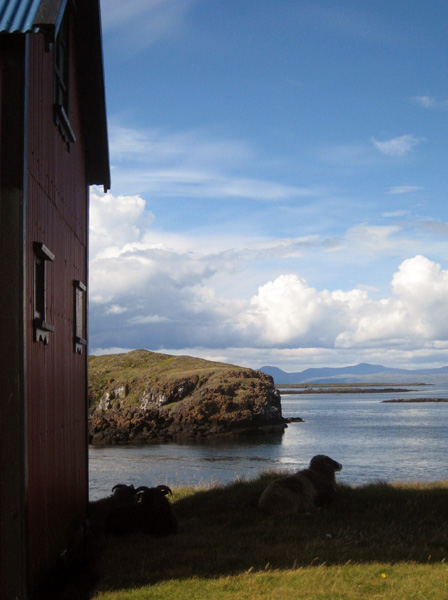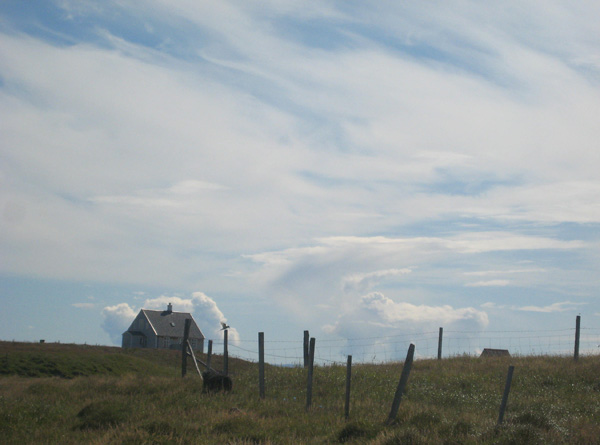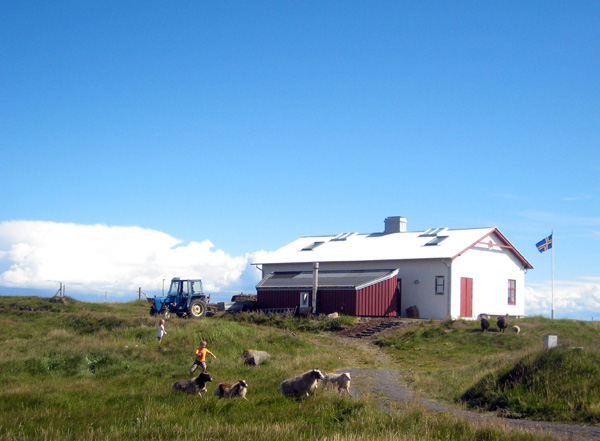Holy genitive case in Icelandic Batman! Posted by hulda on Jul 18, 2013 in Icelandic grammar
 Reading the Icelandic competition entries I noticed that one opinion stood out among the answers; that the genitive case of Icelandic is, to put it politely, very confusing. This sounded like a good topic to write about, especially since the one thing that may throw you off balance while you study Icelandic is that the cases don’t work like they’re “supposed to”.
Reading the Icelandic competition entries I noticed that one opinion stood out among the answers; that the genitive case of Icelandic is, to put it politely, very confusing. This sounded like a good topic to write about, especially since the one thing that may throw you off balance while you study Icelandic is that the cases don’t work like they’re “supposed to”.
The following are just instructions on how eignarfall, the genitive is used. To find the correct genitive forms of each word I warmly recommend Beygingarlýsing íslensks nútímamáls, a web page that can tell you every single form an Icelandic word can take. You can use it even if you don’t know the nominative form of the word: just tick that little box underneath the search field and it’ll look up each word that has the form you’re looking up in its declension. Be warned though that you’ll have to write the words correctly, or you risk either getting no result or the wrong result – an accent mark may not look like a big mistake but it can make a penis out of glue (lim = penis, lím = glue, both in þolfall, or accusative case)*.
Lords and ladies of the shadows. Baah.
1. Possession
Regardless of the other usages this is genitive’s main purpose in Icelandic, so let’s have a quick look at it before moving on. The most typical case endings for genitive are as follows, in both their indefinite and definite forms (f.ex. hests = a horse’s / hestsins = the horse’s).
Singular masculine: -A, -S (hestur – hests/hestsins, jakki – jakka/jakkans)
Feminine: -U, -AR (saga – sögu/sögunnar, mynd – myndar/myndarinnar)
Neuter: -S (barn – barns/barnsins)
Plural masculine, feminine and neuter.: -A (læknar – lækna/læknanna, rósir – rósa/rósanna, hús – húsa/húsanna)
Besides these possession is often shown with possessive pronouns:
Minn (M), mín(F), mitt (N) / þinn, þín, þitt (= mine, yours; these two change not only depending on gender but also case!)
Hans, hennar, þess (= his, her, its)
Okkar / ykkar / Þeirra (= our, your, their)
In Icelandic the possessive pronoun always goes after the word it describes. If it helps you can think that instead of saying “my X” you’re actually saying “X of mine”.
Example:
Ég á bílinn – þetta er bíllinn minn. (= I own the car – that is my car.)
Bíll stráksins er rauður en bíll stelpnanna er svartur. (= The boy’s car is red but the girl’s car is black.)
Saga á bílinn – þetta er bíllinn Sögu. (= Saga owns the car – that is Saga’s car.)
This is an island called Flatey (= flat island). I’m sure the name is coincidental.
2. Prepositions
Now we’re getting to the complicated part: there are prepositions in Icelandic that dictate the use of a certain case. To make matters more confusing, when this applies there usually isn’t even a hint of ownership included.
The prepositions that always take a genitive after them are til (= to, toward), milli (= between), vegna (= because of), án (= without), meðal (= among), utan (= outside), innan (= inside), sunnan (= on south side), norðan (= on north side), vestan (= on west side) and austan (= on east side).
Example:
Ég fór til Íslands (= I went to Iceland).
Hann var milli dyranna (= He was between the doors).
Anna fór heim til Jóns vegna veðurs (= Anna went to Jón’s home because of the weather).
Hulda talaði án afláts (= Hulda talked without a stop/continually).
3. Compound words
In Icelandic compound words are sometimes formed with genitive case. The first word or words take the genitive ending.
Example:
Lungnabólga (lunga = lung, bólga = inflammation, lungnabólga = pneumonia)
Fjallabúi (fjall = mountain, íbúi = inhabitant, fjallabúi = hillbilly)
Neyðarútgangur (neyð = distress, útgangur = passage out, neyðarútgangur = emergency exit)
Leðurblökumaðurinn (leður = leather, að blaka = to flap; leðurblaka = bat, maður = man; Leðurblökumaðurinn = Batman)
*By the way, I’ve found that the difference between lim and lím is also really hard to pronounce!**
**Very tricky when you need to buy glue, I’ve also found.***
***I can usually tell by the width of the smile on the sales person’s face whether I managed to pronounce the right one or the wrong one. Thankfully they’ve so far only sold me glue, though.

Build vocabulary, practice pronunciation, and more with Transparent Language Online. Available anytime, anywhere, on any device.
About the Author: hulda
Hi, I'm Hulda, originally Finnish but now living in the suburbs of Reykjavík. I'm here to help you in any way I can if you're considering learning Icelandic. Nice to meet you!







Comments:
Nathan:
No. 2 should be “Prepositions”, yes?
I’m currently struggling with Old Norse and modern Icelandic as part of my studies… randomly found your blog. Will read. 🙂
hulda:
@Nathan Whooops, absolutely. I’ve had a bit of a blind moment there – thank you so much for the correction, that was an embarrassing mistake. 😀
Welcome aboard! I hope this blog can be helpful with the studies (although I’m not very adept at Old Norse). 🙂
Cristina:
Ahh! Finally someone who helps me decypher these things!
Thanks so much for the post, Hulda! Very useful as usual.
hulda:
@Cristina Thank you for the comment, I’m glad you liked it! I had to work really hard to wrap my brain around the Icelandic grammar, so anything I can do to make things easier counts as a small victory.
Mark:
Hi Hulda. Thanks for the piece. You might want to add to this one or do another article on some of the other uses of the genitive. These can be confusing as well.
For example, measures of time and space use the genitive: tveggja tíma reið/a ride of two hours; value: einskis virði/of little worth; description: tveggja ára barn/two year old child; material: glas af vatni; the whole of stuff: snemma dags/early in the day; objective genitive: ótti drottins/fear of god.
To my chagrin, the convention of putting the possessive after the noun isn´t always true. The examples above for measures of time and space, value and description put the genitive element before the noun like a normal adjective. The others do not–figuring out which goes where has been hard for me! Again, thanks for the post.
hulda:
@Mark That’s a great suggestion, in fact I’m leaning more towards making a separate blog post for those parts of Icelandic declension that I like to call “what, why, how even, aaah better just learn it by heart because I can’t make any sense of why it does this”. 😀 Even our professors have often said as a reply to someone asking why certain exception occurs that there is no clear reason and that some parts of Icelandic you just have to memorize. Thankfully the occasions you mentioned are in frequent use, so they sort of grow on your memory and you’ll soon begin to use them automatically.
Icelandic is a language that technically speaking has rules but then it throws in exceptions to the rules and quickly follows up with exceptions to the exceptions, definitely worth a blog post of its own!
Chris Brew:
There are prepositions in German that take the genitive, including “wegen” (due to), “statt” and “anstatt” (instead of) “ausserhalb” and “innerhalb” (outside of and inside of) waehrend (during)
and “trotz” (in spite of). Basically the same story, and notice that many of the English versions have “of” in them.
hulda:
@Chris Brew Seeing how they’re both Germanic languages I’m not too surprised to find many grammatical similarities between German and Icelandic. To compare, in Finnish genitive means ONLY ownership and can be used solely for that reason. Then again Finnish doesn’t have f.ex. prepositions, just a huge amount of cases! 😀
Bill:
Speaking of accents (“lim” vs. “lím”): you mentioned that case being “þólfall” when it is in fact “þolfall”, i.e without the accent over the ‘o’. Couldn’t resist commenting that one since the very topic was accents and the correct use thereof. 🙂
hulda:
@Bill Oh my, how embarrassing! 😀 Thank you for the notice, I edited it right away.
lamenawuer:
Hi Hulda, great post as usual! I had a tiny question, how and why would you make the difference between the particles with -an at the end? Let’s say, if I want to say “The car is outside”, should I say “Bíllinn er fyrir utan” (þolfall) or “Bíllinn er utan” (eignarfall)? I know that with þolfall there’s a sense of motion toward the object. May that mean that if I use “fyrir utan” I’m denoting that the car is outside but it’s moving and with “utan” I’m not? What about with þágufall, is there a similar preposition?
Takk fyrir hjálpina!
Helen:
@lamenawuer Hi, I’m also interested in how to use fyrir. I’m doing the IOL course and sometimes need extra help with various points. I usually find the right answers, just taking advantage of this great blog!
Takk fyrir Hulda! 🙂
hulda:
@Helen Good questions from the both of you! They might need a bit longer an answer than can nicely fit in a blog comment though, so I’ll try to write an entry for next week on the usage of “fyrir”. 🙂
Btw there’s no sense of movement in either “fyrir utan” or “utan”. They technically speaking mean the same but their usage is slightly different.
Helen:
@hulda No sooner said than done! (Oh, maybe that would be nice to know in Icelandic.)
Now for the fyrir word list! Some of them are pretty easy for those who know English I think…
Thank you for the ‘fyrir’ blogg.
Takk fyrir Hulda!
Helen:
@Helen By the way :” fyrirvari = notice, warning; taka með fyrirvara = take with a grain of salt” = literal meaning?
(I would say “a pinch of salt”.)
Takk!
hulda:
@Helen Glad to know it was helpful! And thank you for the note, English has its own set of difficulties as well I see. 😀
Louie:
I am currently trying to learn this language. It has captured my heart and I truly wish to live in Iceland. These posts have greatly facilitated my learning. Takk!
Stanisław:
Does
‘bíll stelpnanna er svartur’
not mean ‘the girls’ car…’ rather than ‘ the girl’s car …’?
Stanisław:
Re
lim = penis, lím = glue
Easy to tell apart, actually, if you know a few Germanic sister-languages:
lim = limb in English (body part)
lím = Leim (glue) in German.
Icelandic ‘í’ (long ‘ee’ in Old Norse) regularly corresponds to ‘ei’ in German, cf. ‘ís’ for ‘Eis’ (ice), hvít(ur) for ‘weiss’,